Vira Fruits is the top Dates exporter in Iran. It goes without saying that the Middle East is the birthplace of many kinds of dates.
The area around the Persian Gulf has an ideal environment for all kinds of dates to be grown. Mazafati, Zahidi, Piarom, Kabkab, Barhi, Halawy, and Medjool are the most well-known and most traded kinds of Iran dates.
Iran, which is a dominant Persian Dates supplier, is among the top three in the world and due to the suitable (hot and humid) climate in the south of the country, produces and exports Persian dates in huge quantities every year.
Germany, England, China, France, India, Russia, Malaysia, Canada, Denmark, Sweden, Ukraine, Japan, and many others, are the countries that import Dates from Iran.
Kerman, Hormozgan, Baluchistan, Bushehr, Khuzestan, and Fars are the provinces with the most annual production of Iran dates and are all located close to the Persian Gulf. Bam, a city in Kerman, produces the most popular kind of Iran dates, Mazafati.
Get in Touch
Put your number we will cantact you
What makes Iran dates stand out, is quality at a reasonable price for dates exporters and importers, wholesale purchasers, distributors, and others.
Here in Vira Fruits with our professional sorting system and committed team, we provide different levels of quality for various market segments and this has led us to be a premier Iranian Dates supplier.
We make our best effort to provide you with high-quality Persian dates suitable for your target market because we believe earning your satisfaction and staying committed to your order until the last minute is our job.
Download the product catalog
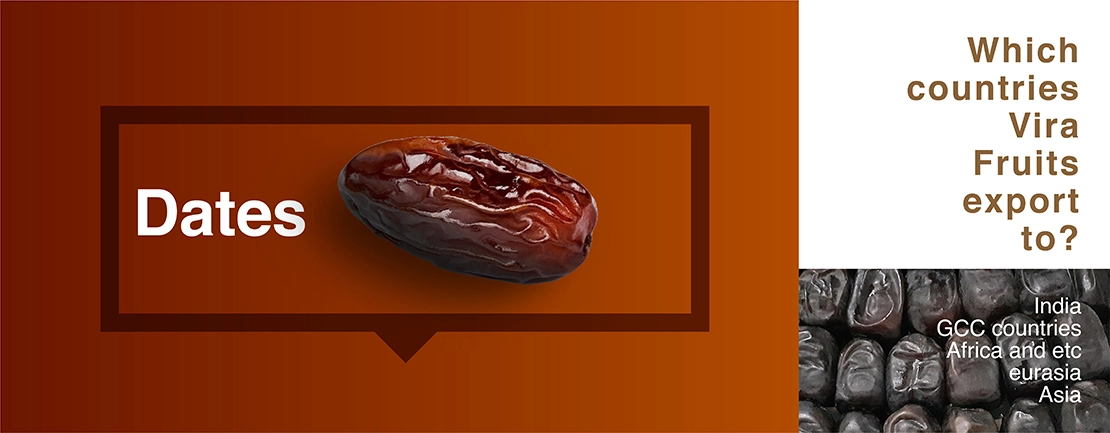
Iranian Dates season availability
| Season available | Jan | Feb | Mar | Apr | May | Jun | Jul | Aug | Sep | Oct | Nov | Dec |
| Mazafati | ✔ | ✔ | ✔ | ✔ | ✔ | ✔ | ✔ | ✔ | ✔ | ✔ | ✔ | ✔ |
| Piarom | ✔ | ✔ | ✔ | ✔ | ✔ | ✔ | ✔ | ✔ | ✔ | ✔ | ✔ | ✔ |
| Zahidi | ✔ | ✔ | ✔ | ✔ | ✔ | ✔ | ✔ | ✔ | ✔ | ✔ | ✔ | ✔ |
| Kabkab | ✔ | ✔ | ✔ | ✔ | ✔ | ✔ | ✔ | ✔ | ✔ | ✔ | ✔ | ✔ |
Wholesale Dates packaging
| Shipping | 7 kg mother carton which in there are 12 baby cartons | 8 kg mother carton which in there are 12 baby cartons | 9 kg mother carton which in there are 12 baby cartons | 10 kg mother carton which in there are 12 baby cartons | 5 kg bulk carton |
| 40ft Refrigerated and insulated containers | 3280 x 7 kg | 2875 x 8 kg | 2555 x 9 kg | 2300 x 10 kg | 4600 x 5 kg |
The packaging is based on your demand. If you want the box in customized size, let us know.
Wholesale Dates cargo handling
| Facts | |
| Origin | Originally Mediterranean, Mesopotamia. Today, regions all over the world. |
| Stowage factor (in m3/t) | Approx. 1,60 m3/t (cartons) |
| Humidity/moisture | The residual moisture content can vary from small (3-8%) to substantial (16-18%), depending on the fruit type. |
| Ventilation | If the product is at ‘shipping dryness’, ventilation is not required. If not (risk of degradation by mold etc.) 6 air changes/hour (airing) |
| Risk factors | Wetness/mold Odor Contamination Mechanical influences Toxicity/hazards to health Shrinkage/shortage Insect infestation/diseases |
Importing dates from Iran would be a wise choice to make since this country is rich in dates.
Vira Fruits stand out from other fruit export company because other Persian dates suppliers export only one or two kinds; whereas we export all kinds of Iran dates at all distances.
FAQ
What types of dates come from Iran?
Persian dates are among the bests in the world. An Iranian dates can be classified into several types, including Piaroms, Sayers, Mazafatis, Zahedis, Kabkabs, Rotabs, Rabbis, Kalootehs, and Shahabis.
Can I import dates from Iran?
Yes;
Iran is one of the most competitive countries in the date fruit market since it produces unique dates; In other words, we are the producer that most countries import dates from.
Vira Fruits is among the leading Dates exporters in Iran with the best prices in the market and strives to satisfy their customers.
Which countries produce the best dates?
Dates Production – Source FAO
1) Egypt 1,594,032 ton
2) Saudi Arabia 1,310,015 ton
3) Iran 1,225,349 ton
4)Algeria 1,131,605 ton
How many dates should I eat a day?
To get all the essential nutrients from dates, it is ideal to eat 100 g each day or a handful.
Which countries import dates?
India 362,208.91 tone
France 50,476.99 tone
Germany 28,795.32 tone
Pakistan 27,032.79 tone
UK 25,061.42 tone

What Is a Date Fruit?
Tropical stone fruits, dates, originated in the Persian Gulf area of the Middle East 5,000 years ago, and they are grown on the date palm. The fruits are bright green and crunchy in large clusters when young but mature to become soft, chewy, and delicious when mature, and vary in color from light brown to almost black. The drier and smaller varieties are usually smaller, whereas the darker types darken almost to black. For thousands of years, dates have provided nourishment for the Middle Eastern culture and are regarded as a “tree of life.”
It is best to describe the ripening process as a four-stage process:
- unripe
- crunchy
- semi-dry or soft
- sun-dried
Although they usually hang on the tree until they are fully ripened, they are often harvested earlier so the drying process can be controlled.
Despite being dried, dates fruit is not totally dehydrated like dried apricots. The reason that you should keep them in a cool place is that they still contain some moisture. A date earned its name from its oval shape, which is based on the Greek word daktylos, meaning finger.
For growing, the date palm needs a hot climate, which makes it indigenous to the Middle East and North Africa. The calories and nutrients contained in one cup of this fruit can sustain human life even in dry, barren locations. That is the reason why bedouins used to live off dates.
How is the taste?
Despite the wrinkles on the outside, this sweet, delicious, and sticky fruit is still soft and sweet on the inside. Their flavor is very much like chocolate, with notes of butterscotch, cinnamon, and toffee. It has been said that their flavor is similar to a cross between a prune and a fig, without the cinnamon.
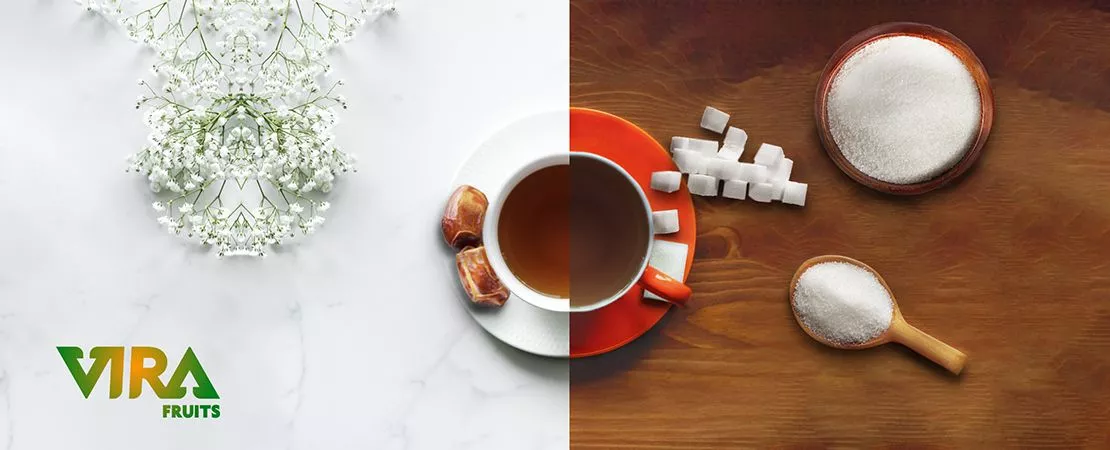
What are the dates health benefits?
Since dates contain high levels of natural sugars, most people consider them healthy. Its excellent nutritional value, fiber content, and antioxidant content make it an ideal sweet fruit for health. Dates are beneficial for combat fatigue, digestive health, weight management, inflammation, and heart and muscle health improvement.
Classification
If we want to classify dates by their type, here is how it goes:
- Dried Dates: When the moisture content is less than 15%
- Semi Dried Dates: when the moisture level is between 15% and 18%
- Fresh Dates: This is when moisture is between 18% and 35%
What kinds of Dates do we have in Vira Fruits?
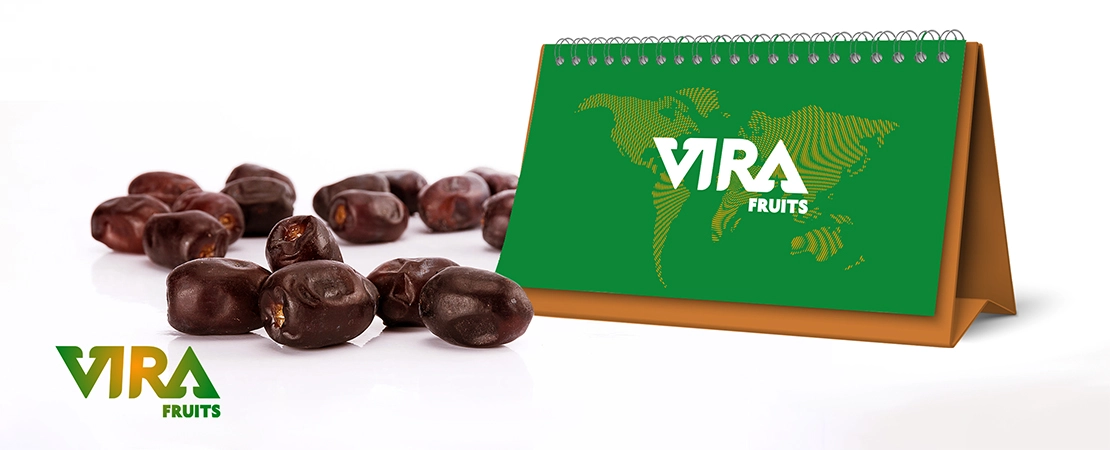
Mazafati dates
Known as date Bam, Mazafati dates are among the most renowned and popular varieties of Iran dates fruit. Supplier Mazafati dates usually sell them fresh as Ruta. Due to its high moisture content, this kind of Persian date can not be used as nuts. Based on harvest time and growing area, the moisture content in dates varies from 15% to 35%. Iran dates are typically 2.5 – 4.5cm in size and have extremely useful flesh. This special Persian date usually delights customers with its mild sweetness and soft melting.
Palmaceae or Arecaceae is the family of plants belonging to the Mazafati date palm. Mazafati date palms are scientifically known as Phoenix dactylifera. Developed in the tropical and subtropical regions of Iran, the Mazafati date palm is a native species.
Mazzafati dates are cultivated in large quantities across the country “Iran,” and they are one of the oldest cultivated plants in Iran. Mazafati Date trees generally reach a height of about 25 meters (82 ft) and grow singly, or they can form a clump of trees from a single root system. In general, the dates of the date palm are oval and thick, ranging from 3 centimeters (1.18 in) to 4 centimeters (1.57 in), fleshy and of a dark purple color tending to black. The dried dates pieces form by Mazafati are usually very sweet, containing approximately 75 percent sugar.
The moisture content of Mazafati or Mozafati dates (15-25%) depends mainly on harvesting time and growing place. Depending on the variety, the harvesting of Mazufati dates begins in August and lasts until the end of October. In order to preserve Mazafati dates, temperatures should be between 3 and 5 degrees Celsius.
What are the Mazafati Dates uses?
It is possible for Mazafati date palms to last for over 60 years in production. Supplier Mazafati dates also supply them seeded, or chopped, Mazafati dates can be used in cereals, puddings, bread, cakes, cookies, ice cream, or candy bars. Dates that are surplus are processed into cubes, paste, spreads, powder (dates sugar), juice, syrups, vinegar, and alcohol.
Bam Mazafati Dates
As dates exporter and dates supplier, Vira Fruits provide the best and longest shelf-life Mazarati date varieties produced in “Bam city”. However, this type is cultivated in tropical and subtropical regions of Iran. Rotab Mazafati dates are mainly harvested in Bam, an Iranian city in the southern part of the country. Bam is harvesting and producing fresh Mazafati dates on around 30,000 Hectares of his land. Mazafati Bam Fresh Dates are produced at a capacity of approximately 200,000 tons per year.
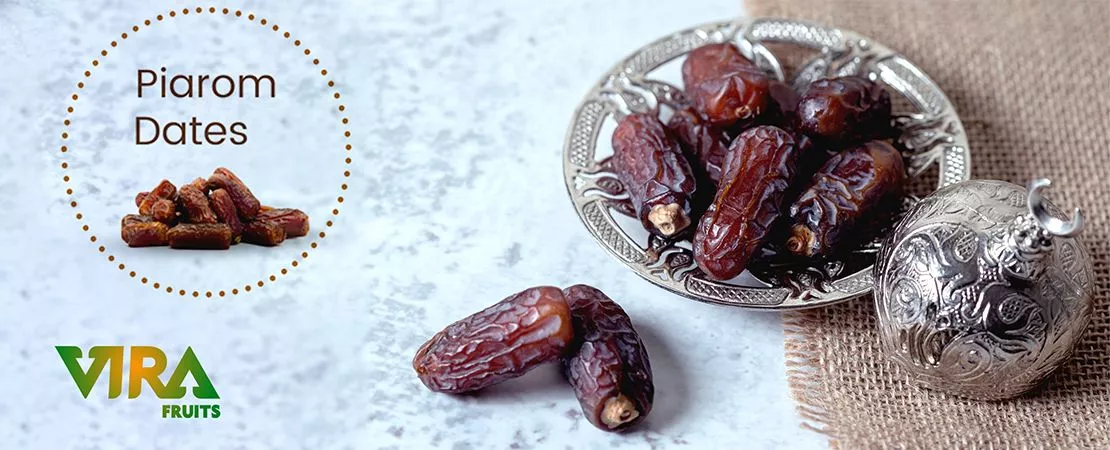
Piarom Dates
In the south of Iran, the Hormozgan province (Haji Abad area) produces Piarom dates, which are considered to be the most luxurious and expensive variety of dates in Iran. Among the 40 kinds of dates in Hormozgan province, Piarom is cultivated the most, followed by Mordar Sang, Zard, Allmehtari, etc. They differ in types, sizes, colors, water levels, sugar levels, shapes, and sizes, which are influenced by the type of soil, water, air, and moisture during cultivation. The Piarom Dates tree only grows in the Hajaibad area. There are four villages in Hajiabad city where dates are grown: Cirueie, Tarom, Tazraj, and Daragah. There are no chemicals used in the harvesting, so that means they are all grown organically. The Piarom Dates is most often grown in the mountains and irrigated basins and is one of the world’s most delicious semi-dried dates.
They are semi-dried and meaty but have 15% moisture. In October, Piarom is generally harvested by farmers, and it takes until November for it to be ready for sale. Piarom dates are dark brown, have thin skin, have low sugar, and can be eaten by diabetics because they do not have an adverse effect on them. Its unique flavor and shape make Piarom dates famous in international markets as Chocolate Dates.
Vira Fruits Piarom dates exporter and dates supplier is known for its high quality and has attracted numerous renowned international markets and dates importers because of their excellent customer satisfaction. The classification of Piarom Dates are based on their size; they are classified into two categories: Jumbo (max 120 per kg) & Standard (max 140 per kg).
Piarom Dates has a high nutritional value due to its protein and other mineral contents. There is a lot of fiber in Piarom Date, making it very good for the digestive system. Furthermore, Piarom contains potassium, which is necessary to prevent high blood pressure and boost the nervous system. The Piarom date’s magnesium content also makes it beneficial to muscles.
The usage of Piarom Dates
In addition to eating dry or soft dates (Piarom, Mazafati, etc.) out of hand, they can be seeded, stuffed, or chopped into a variety of ways, including on cereal, pudding, bread, and sweet treats. Pitting can be done in factories using machinery that crushes and sieves the fruits or pierces them to remove the seed, leaving the whole fruit whole. Mechanically removing the calyces is also possible. In addition to cubes, paste, spread, powder (dates sugar), jams, jellies, juices, syrups, vinegar, and alcohol, surplus parts can be made into any product.
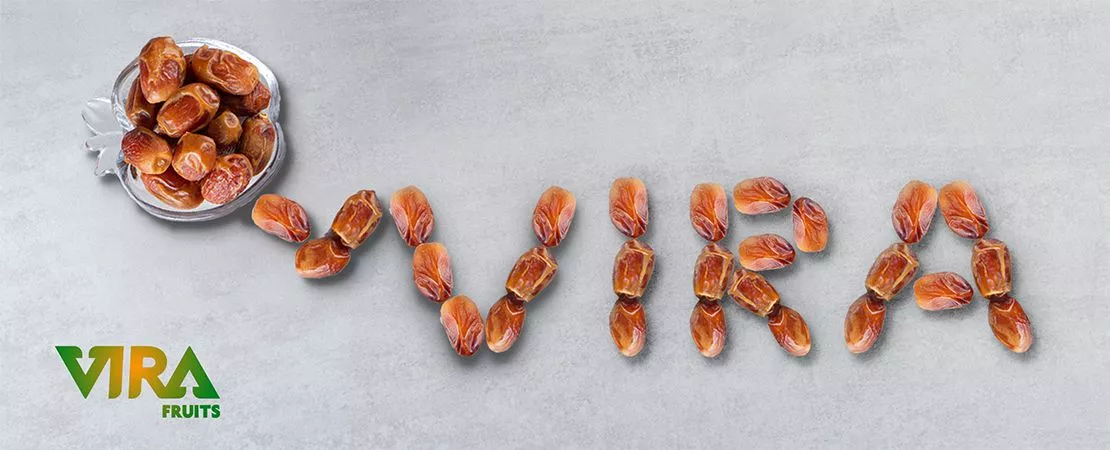
Zahidi Dates
In Iran, Zahidi Dates (wet and dry) is recognized as the most popular kind. Iran is a tropical country with many areas for growing this Dates fruit, but the most important ones are Fars and Kerman provinces. Zahidi Dates is a yellow-brown fruit with a meaty texture and a mild flavor, with low moisture content, which makes it ideal for long-term storage.
Typically, Iranian Zahidi dates are small and oval dates measuring about 3cm in diameter. Zahidi Dates are characterized by a hard, shiny, dried-up appearance; sometimes their skin sticks to the flesh, while other times the fruit skin separates from the flesh. Depending on the weather (heat, humidity), the fruit may even be crumbled. Depending on the ripeness of the fruit, they range in color from yellow to light brown. Zahidi Date’s moisture content is lower than 14%, compared to other types, which is what makes them dried fruits. Persian Zahidi dates are meaty and delicious, but they are notably less sweet than other dates, making them ideal for those who are less fond of sweetness.
Iran has some of the most tropical cities where the Zahidi dates can be grown, but most of the harvesting of this fruit occurs in the Fars and Kerman provinces. Additionally, this is where you can find the best kind of dates fruit from Iran, namely the Zahidi date fruit. Other places where Zahidi dates are grown include Firuz Abad, Bushehr, Lar, Ahvaz, Khorram Shahr, Iraq, and America. The Iranian Zahidi dates are harvested in various parts of the country during mid-September, although they are available for purchase from October through March.
Natural nutritional substances present in Zahidi Dates give the dates high nutritional value. Zahidi Dates contain Vitamins (like vitamin A, vitamin B complex, vitamin C, and others.), sugars (like fructose and etc.), and minerals (like potassium, magnesium, protein and etc.). Approximately 300 calories are present in every 100 grams of dried dates, and they consist of roughly 70% carbohydrates, 2.2% protein, and 0.6% fat. Fresh dates contain about 160 calories. Although most Zahidi dates produced are consumed in the domestic market, international exports of Zahidi dates have increased recently due to high production and quality. Vira Fruits as Zahidi dates exporter and dates supplier, export large quantities of Zahidi dates to Pakistan, India, Turkey, and etc.
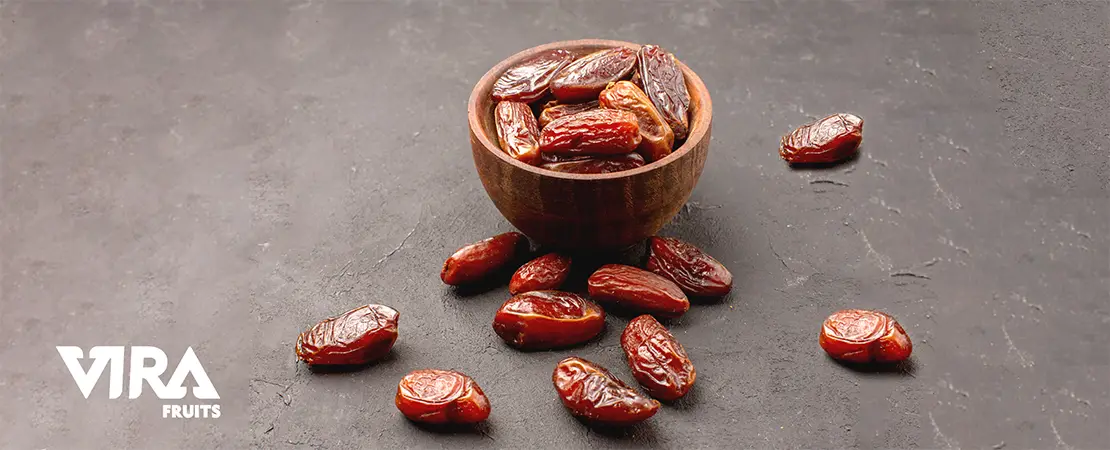
Kabkab Dates
Iran’s Kabkab Dates is a wet Dates with a semi-dried texture, which is long and dark brown. It has the highest economic value among Iranian Dates after Astamara and Shahani Dates. Among all dates fruits in the world, Kabkab Dates is the most important and abundant one, being grown in most tropical cities of Iran. Kabkab Dates can be cultivated in most tropical cities in Iran, including the areas of Khesht and Kamarj in Kazerun in the Fars province and Dashtestan in Borazjan in the Bushehr Province.
Kaserun, in the southwest part of Iran, is among the most important and largest cities of Fars (one of Iran’s 31 provinces). Therefore, the city’s date palms have grown rich in their dry and hot climate. Karzerun city is one of the most important palm-producing areas in the country as it produces about 30 thousand tons of dates annually with the same level of 4 thousand and 600 hectares.
Dashtestan city is one of the most important and largest cities in Fars province (one among the 31 provinces of Iran) located in the southwest of the country. Due to its dry and hot climate, the city is home to a variety of date palms (the only agricultural product exported from this province is date palm). It is the first city that produces date palms and citrus in the world. There are approximately 16,250 hectares of land dedicated to palm cultivation in the city. Date palms, one of the agricultural products of Dastistan, drive the city’s economy.
Compared to other dates, Kabkab Dates are soft and have high moisture content. It has a moisture content of less than 18%. At the Khark and Rutab phases (processes), Kabkab Dates are yellow until they fully ripen and become dark brown with a very fine texture. They are classified into two types of pitted and unpitted. A Kabkab dates is sweet and syrupy and tastes very delicious. During the month of September, Kabkab Dates are harvested. Most of this product is consumed domestically, but in recent years steps have been taken to export it due to its high quality and production growth. They export to countries such as UAE, Iraq, India, Russia, Ukraine, Pakistan, Europe, and other locations around the world. As a Kabkab dates exporter and dates supplier, we ship large quantities of Kabkab dates to Pakistan, India, Afghanistan and Turkey.